Complete the following reactions :
a. 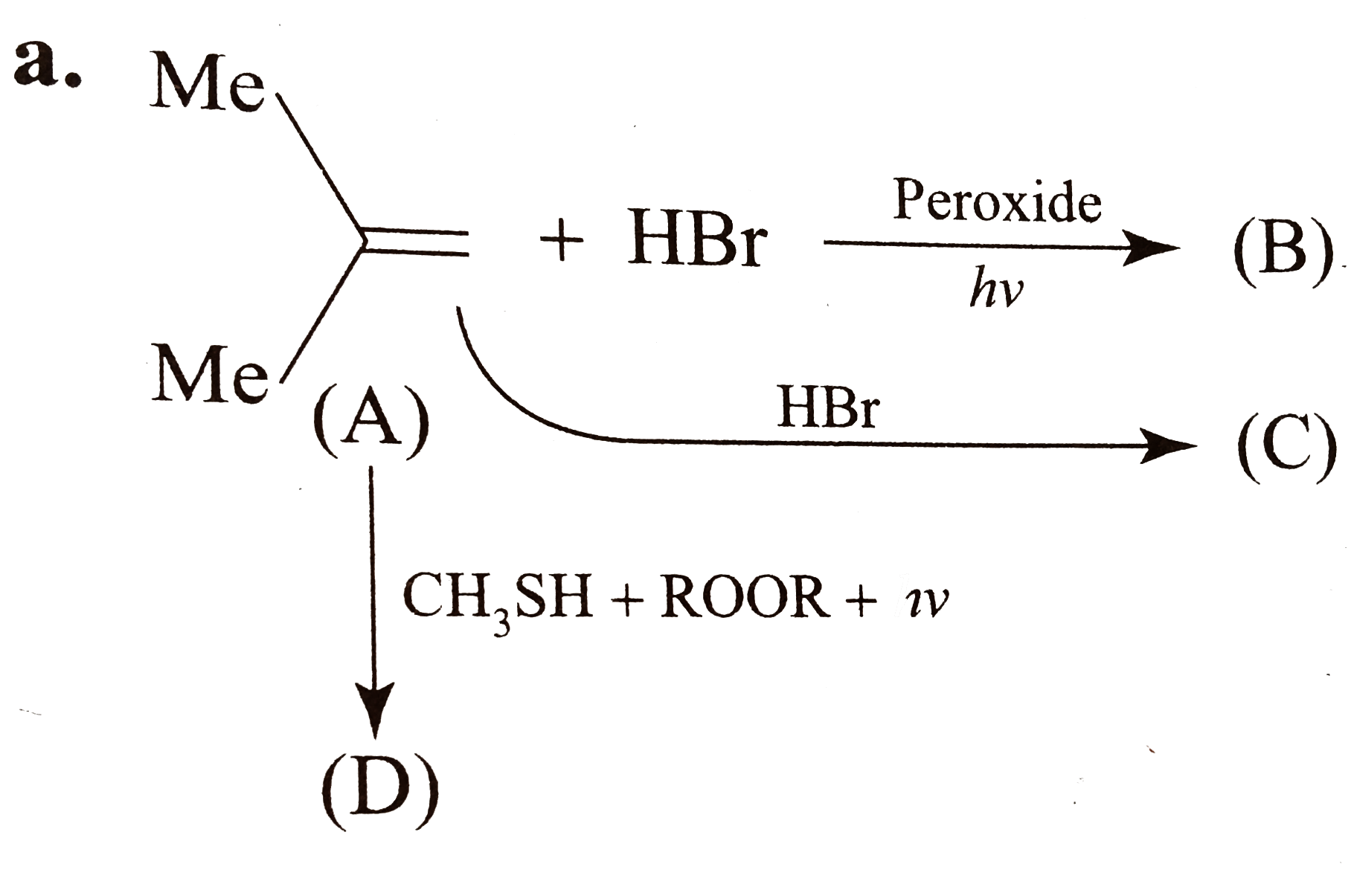
b. 
c. 
d. 
e. 
a. 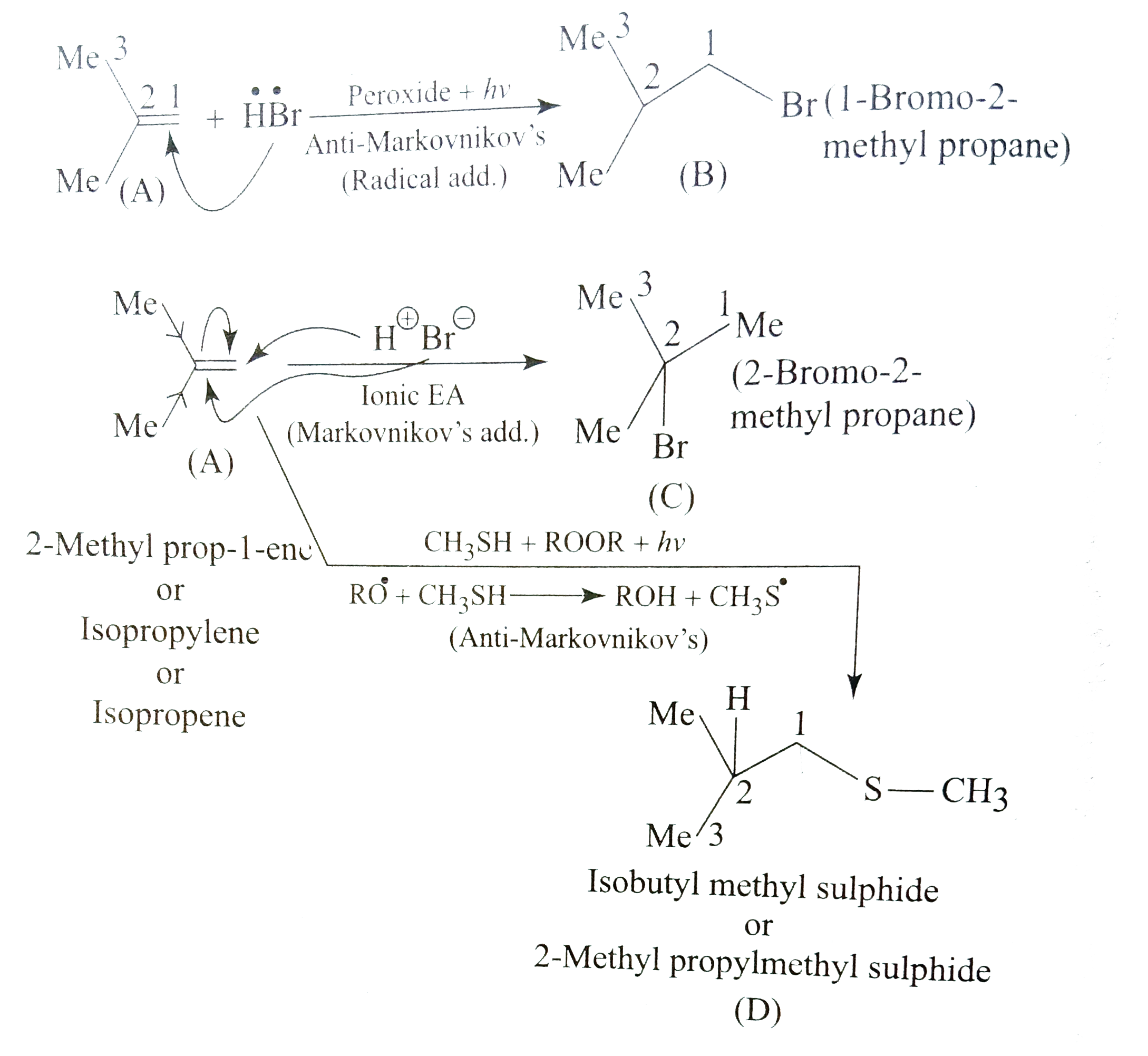 2−Methyl prop −1 ene or Isopropylene or Isopropene Isobutyl methyl suphid or 2−Methyl propylmethyl suphide (D)
2−Methyl prop −1 ene or Isopropylene or Isopropene Isobutyl methyl suphid or 2−Methyl propylmethyl suphide (D)
b.  (C−Br) bond breaks
(C−Br) bond breaks
Propene (E) 3−Bromo−1,1,1−trichlororobutane
c. 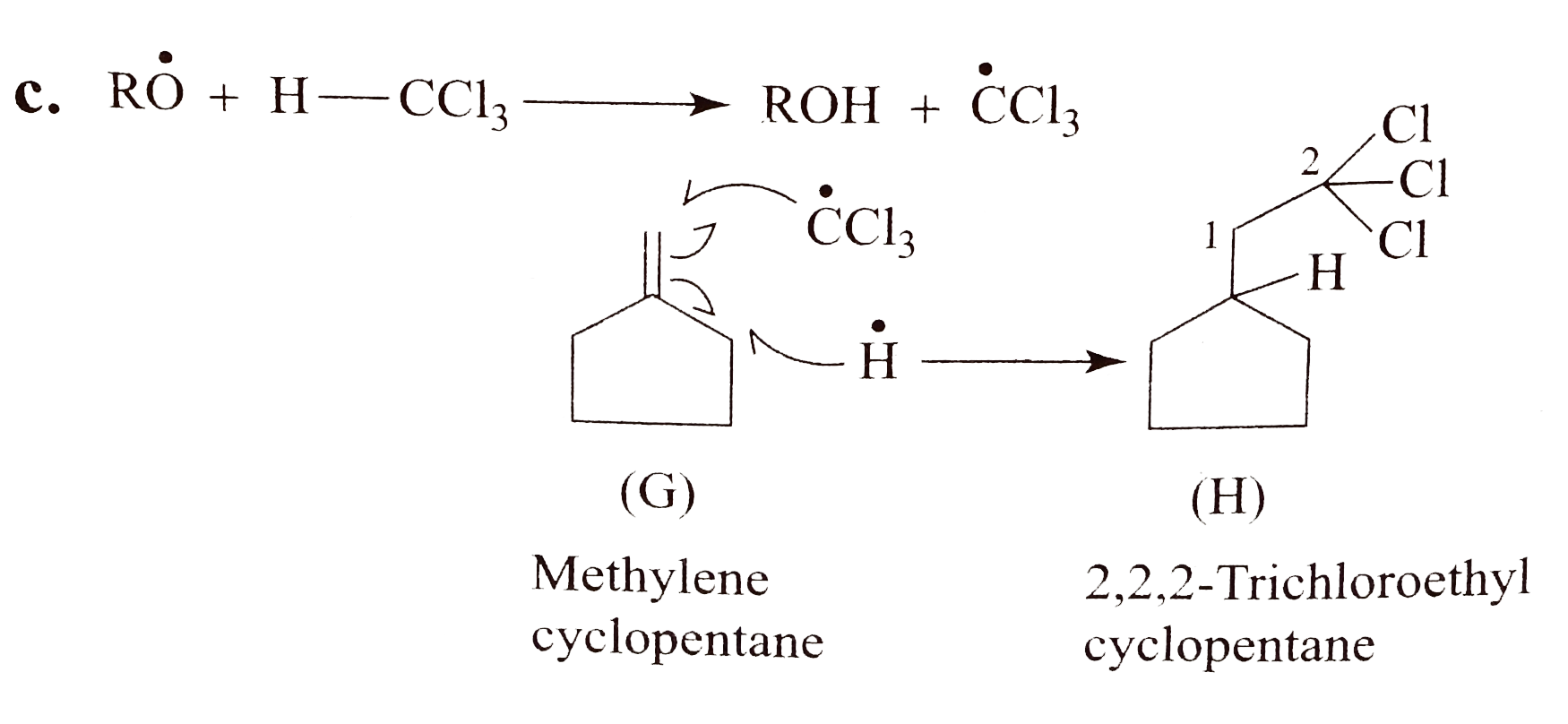 Methylene cyclopentane
Methylene cyclopentane
d.  3,3−Dimethyl but −1−ene 1,1,1− Trifluoro−3−iodo-4,4-dimethylpentane(J)
3,3−Dimethyl but −1−ene 1,1,1− Trifluoro−3−iodo-4,4-dimethylpentane(J)
Addition of .I to (C=C) is endothermic and therefore .CF3 adds in first propagation step.
e. 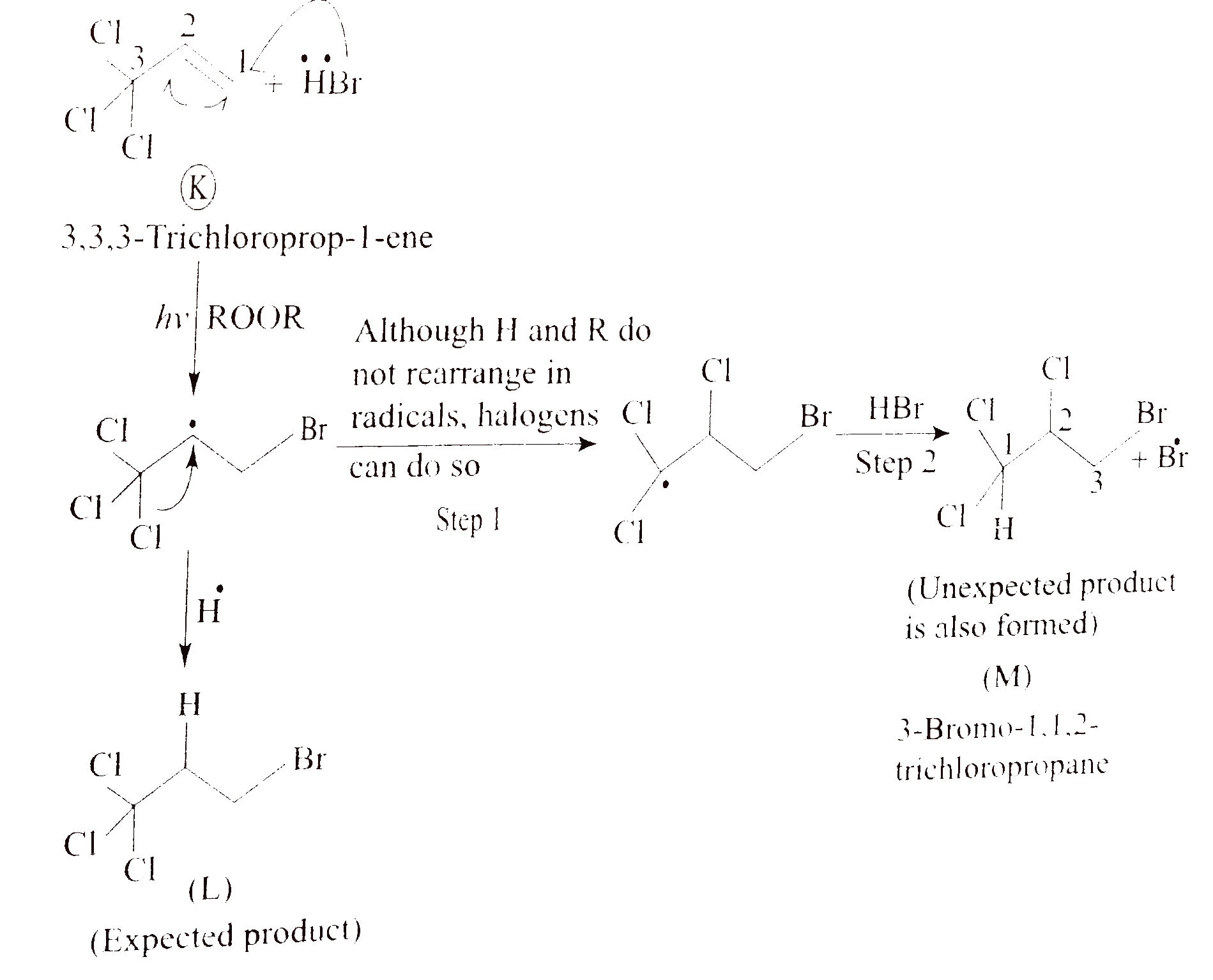 3,3,3−Trichloroprop−1−ene
3,3,3−Trichloroprop−1−ene
( Expected product ) ( unexpected product is also formed )
(M)
3−Bromo−1,1,2−trichloropropane
Topper's Solved these Questions
- ALKENES AND ALKADIENESBook:CENGAGE CHEMISTRYChapter:ALKENES AND ALKADIENESExercise:SOLVED Example
Explore 62 Videos
- ALKENES AND ALKADIENESBook:CENGAGE CHEMISTRYChapter:ALKENES AND ALKADIENESExercise:EXERCISES
Explore 29 Videos
- ALKANES AND CYCLOALKANESBook:CENGAGE CHEMISTRYChapter:ALKANES AND CYCLOALKANESExercise:Archives
Explore 13 Videos
- ALKYNESBook:CENGAGE CHEMISTRYChapter:ALKYNESExercise:Exercises (Archives - Analytical and Desriptive Type)
Explore 4 Videos
Similar Questions
Compete the following reactions:
a.
b.
c.
d.
e.
View SolutionComplete the following :
(a)
(b)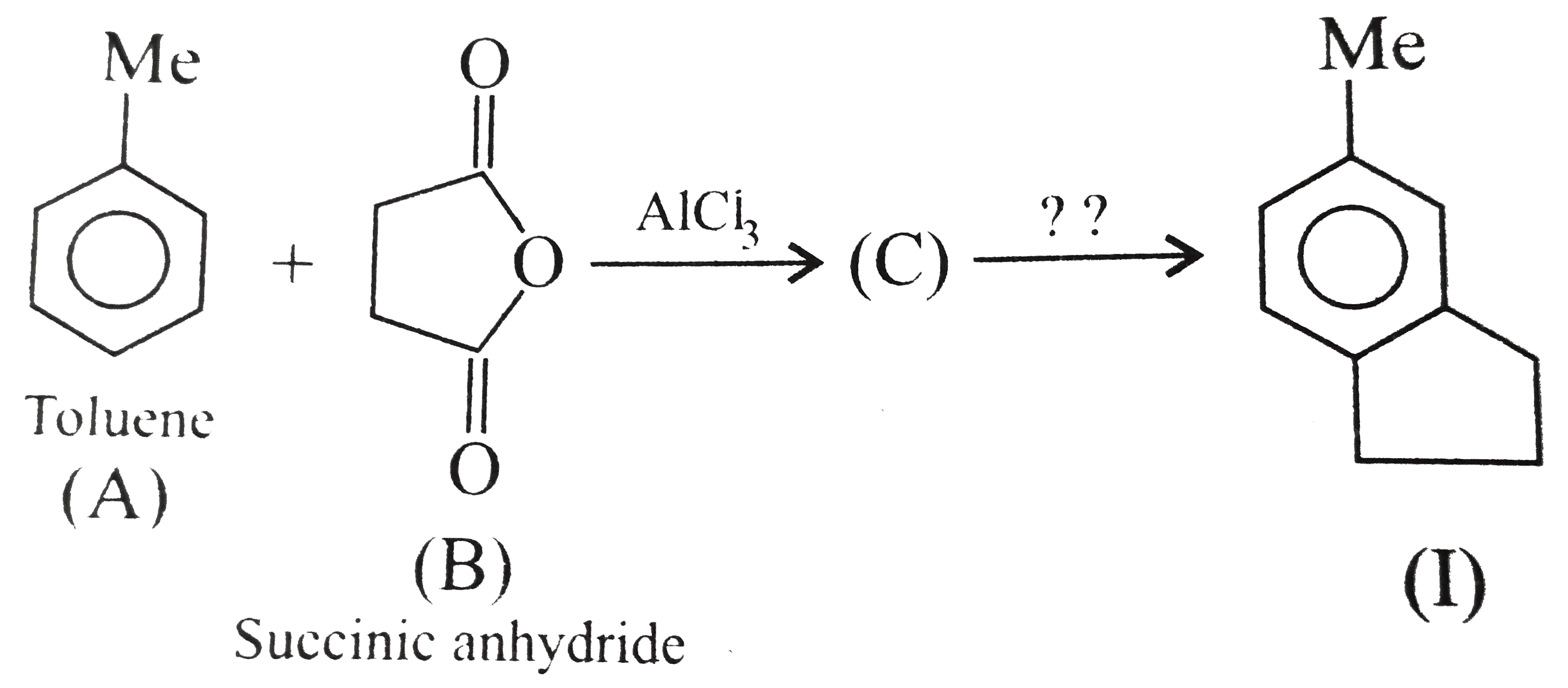
( c)
(d)
( e)
View SolutionGive the majore and minor products of the following reactions.
a.
b.
c.
d.
e.
f.
View SolutionComplete the following reaction :
(a)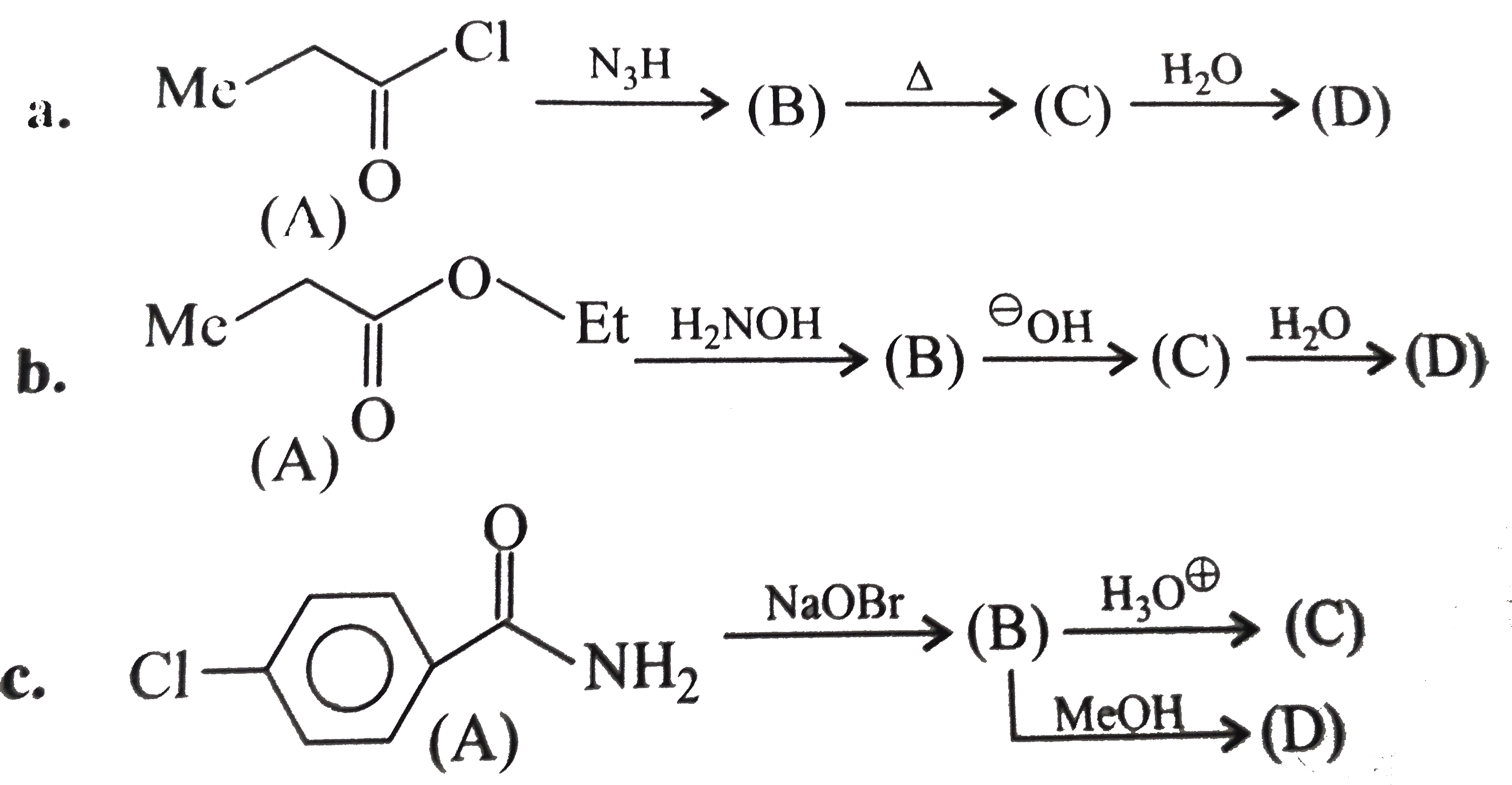
(b)
( c)
(d)
( e)
(f) PhCHON3H/H⊕−−−−−→Δ(B)H3O⊕−−−→(C)+(D)
(g)
View SolutionComplete the following with stereo− chemistry.
a.
b.
c.
d.
e.
View SolutionComplete the following reaction.
a.
b. Alcohols are converted to alkenes by using POCI3 and organic base. Explain that whyc this is an effective method.
c. , d.
, d. 
e.
f.
g.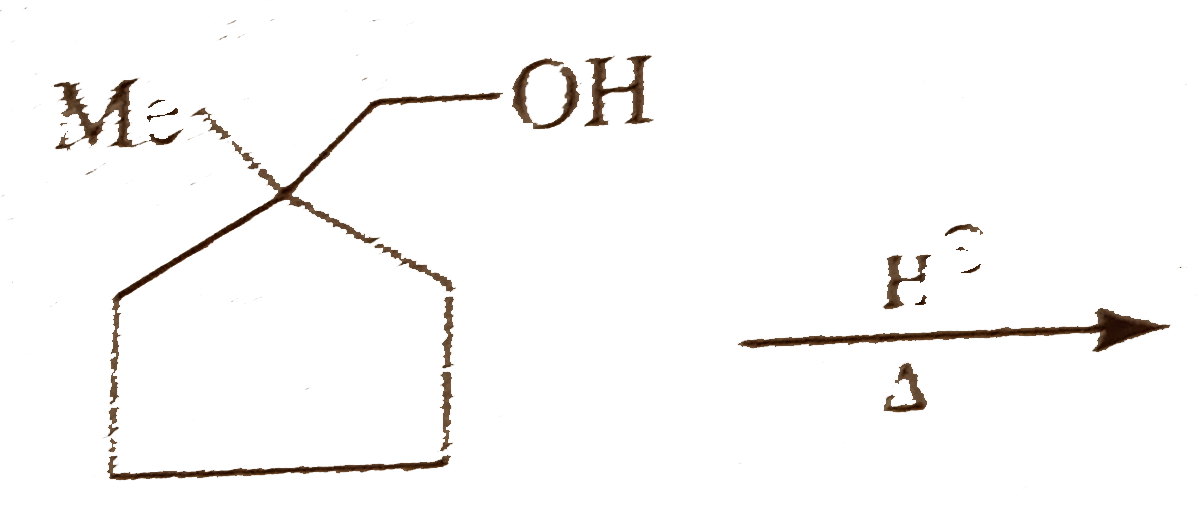
View Solutiona. Identify (A) to (E ) and name the stereoisemer of (B).

b. Complete the following reaction:
i.
ii.
iii.
c. Give the structure of phosphonium halide, alkyl halide, and carbonyl compound used in the synthesis of following compounds by Witting reaction.
i. ii.
ii.  ltbgt d. Complete the following reactions:
ltbgt d. Complete the following reactions:
View SolutionComplete the following reactions :
(a)
(b)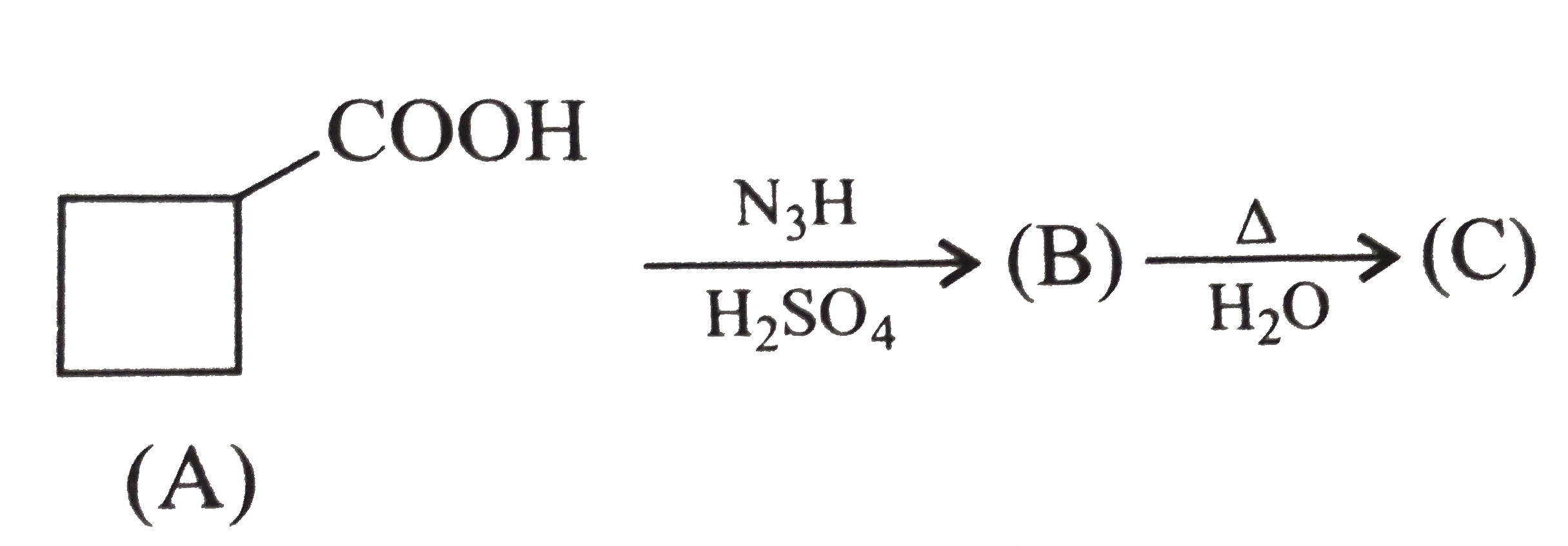
( c) Me−COOH(A)NH2OH−−−−→(B)ΘOH−−→(C)
(d)
( e) .
.
View SolutionComplete the following table by explaning A,B,C and D

View SolutionComplete the following the following missing reagents :

(b)
( c)
(d)
( e) .
.
View Solution

